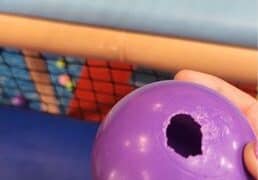The Ultimate Guide to Understanding Corn Flour vs. Cornstarch
Welcome, lovely parents and culinary enthusiasts! As you journey through the delightful world of cooking and baking for your family, you may find yourself pondering this common question: Is corn flour the same as cornstarch? Fear not, for I’m here to sprinkle a dash of clarity on this topic, ensuring you’re equipped with the knowledge to whip up delicious meals and treats that’ll bring smiles to your loved ones’ faces. So, grab your whisk, let’s dive into the delightful details, and unravel this culinary conundrum together!
Understanding the Basics: What Are They?
To start off, it’s important to recognize that while they both come from corn, corn flour and cornstarch are not identical twins in the pantry. They are, in fact, more like kitchen cousins with different characteristics and uses. Let’s get to know them a little better!
- Corn Flour: Corn flour is the finely ground version of whole corn kernels. It contains the hull, germ, and endosperm of the corn, which gives it a yellow hue and a slightly nutty and sweet flavor. It’s commonly used in breading, as a thickening agent, or as the base for cornbread and other corn-based baked goods.
- Cornstarch: Cornstarch, on the other hand, is a white, powdery substance extracted solely from the endosperm of the corn kernel. It’s primarily used as a thickening agent for sauces, soups, and stews due to its remarkable ability to form a clear gel when mixed with water and heated.
Nutritional Differences and Dietary Considerations
When we consider the health and nutrition of our families, every ingredient counts. Corn flour and cornstarch have distinct nutritional profiles that can impact your recipe not only in taste and texture but also in terms of health.
- Corn Flour: Being made from whole grain, corn flour contains fiber, vitamins, and minerals beneficial for a balanced diet. It is a wholesome ingredient perfect for adding a little nutritional boost to your recipes.
- Cornstarch: On the flip side, cornstarch is largely composed of carbohydrates, specifically starch, and has minimal protein or fiber. If you’re looking for ways to reduce carbs or you need to consider dietary restrictions, cornstarch use might require more careful consideration.
Using Corn Flour and Cornstarch in Your Kitchen
Every parent knows the importance of having the right tools for the job, and the same goes for ingredients in your kitchen! Whether you’re thickening up a cozy gravy or perfecting your homemade tortillas, selecting corn flour or cornstarch for the right application is crucial.
- Corn Flour Uses: Due to its texture and flavor, corn flour works wonders in recipes requiring a more substantial, grainy feel. Think crispy chicken coatings, muffins, cornbread, and those delectable breakfast pancakes that your kids can never get enough of.
- Cornstarch Uses: Cornstarch shines when it comes to giving your sauces and pies that gloriously glossy, thick texture without impacting the flavor. It’s a go-to for stir-fries and puddings, ensuring a finish that’s as smooth as your little ones’ laughter.
Understanding the nuances between corn flour and cornstarch allows you to harness their unique properties to create meals that are not just nourishing but are also masterpieces of your culinary skill. Stay with me as we continue to explore more about these two fascinating ingredients so that you can make informed decisions that cater to the specific needs and tastes of your family.
Now that we’ve built a solid foundation, let’s delve deeper into how to master the use of corn flour and cornstarch and answer some burning questions. What are the differences in texture and consistency? How can you substitute one for the other if you’re in a pinch? Is there a difference in shelf life or storage? All this and more awaits in the continuation of this guide, sweetening your journey with knowledge as you cook up a storm for your treasured family.
Let’s keep the excitement rolling because understanding the symmetry and contrast between corn flour and cornstarch is just the appetizer in the grand feast of kitchen wizardry!

Five Things Parents Should Know When Preparing Corn Flour and Cornstarch
As you harness your culinary powers for the benefit of your family’s taste buds and well-being, here are five essential tips to consider when working with corn flour and cornstarch:
- Understanding Thickening Properties: When using cornstarch as a thickener, remember that it starts working its magic once the liquid reaches a simmer. Mix cornstarch with a cold liquid first to create a slurry before adding it to your hot dish to prevent clumping. Corn flour, being less refined, requires a bit more simmering to achieve similar thickening effects, so consider this when timing your recipes.
- Gluten-Free Alternatives: For families with gluten sensitivities, both corn flour and cornstarch are naturally gluten-free, making them excellent alternatives in gluten-free baking and cooking. However, always double-check the packaging for any cross-contamination notices if gluten is a concern for you.
- Texture and Flavor Contribution: Since corn flour includes parts of the whole corn kernel, it contributes a grainier texture and a corn-forward flavor to your dishes. This can be a blessing in recipes like corn tortillas, where you want that distinct corn taste. In contrast, cornstarch is flavorless and will not alter the taste profile of your dishes.
- Substitutions in a Pinch: If your recipe calls for one and you only have the other on hand, rest assured that a substitution can be made. Generally, 2 tablespoons of corn flour can replace 1 tablespoon of cornstarch. Be mindful, though, that corn flour might alter the color and texture of your dish due to its yellow tint and coarser grind.
- Proper Storage for Longevity: Both corn flour and cornstarch should be stored in airtight containers in a cool, dry place to keep moisture out. While cornstarch has an indefinite shelf life when stored properly, corn flour, having more oils from the whole grain, can become rancid over time. It is advisable to use corn flour within six to eight months for optimal freshness.
Recipes and Applications: Corn Flour and Cornstarch in Action
Equipped with the knowledge about the differences, let’s explore some real-life applications of corn flour and cornstarch, as well as recipes, to truly make the most out of these versatile kitchen staples.
For example, you could use corn flour to make a batch of fluffy corn pancakes for a Sunday family breakfast, adding a pinch of cinnamon for an extra kick of flavor that your children will absolutely adore. On the contrary, add cornstatch to your homemade gravy recipe to ensure it’s thick and sumptuous – just right for drizzling over your succulent roast chicken during family dinners.
Let’s not forget baking! Employ cornstarch in your next batch of lemon bars for that perfect, melt-in-your-mouth shortbread base, or use corn flour in your chocolate chip cookie recipe to add a subtle corn flavor and a heartier texture that could soon become a family favorite.
The culinary world is your playground, and with these fun insights, you’re all set to make informed, delicious choices with corn flour and cornstarch. Whether you’re a seasoned home chef or a budding kitchen novice, your adventure in the land of corn-derived ingredients is bound to be exhilarating, beneficial, and absolutely scrumptious!
Carry on exploring, experimenting, and enjoying every moment of your cooking journey, because the love you pour into your recipes is the secret ingredient that makes every dish a home-run. Let corn flour and cornstarch be the dependable sidekicks that help bring your family’s food stories to life!
For more great articles please see here. For more information see here
Disclaimer
The articles available via our website provide general information only and we strongly urge readers to exercise caution and conduct their own thorough research and fact-checking. The information presented should not be taken as absolute truth, and, to the maximum extent permitted by law, we will not be held liable for any inaccuracies or errors in the content. It is essential for individuals to independently verify and validate the information before making any decisions or taking any actions based on the articles.




